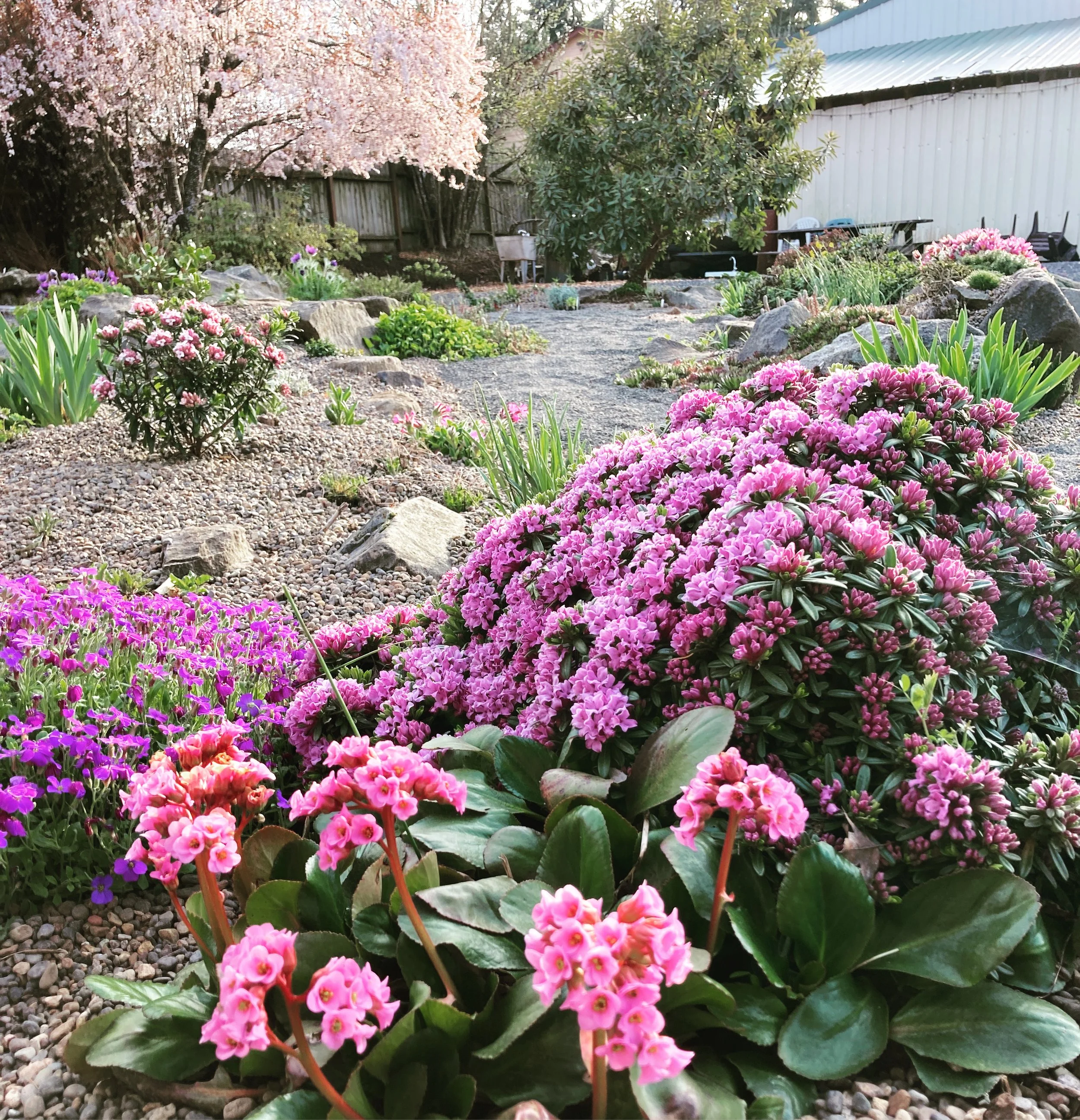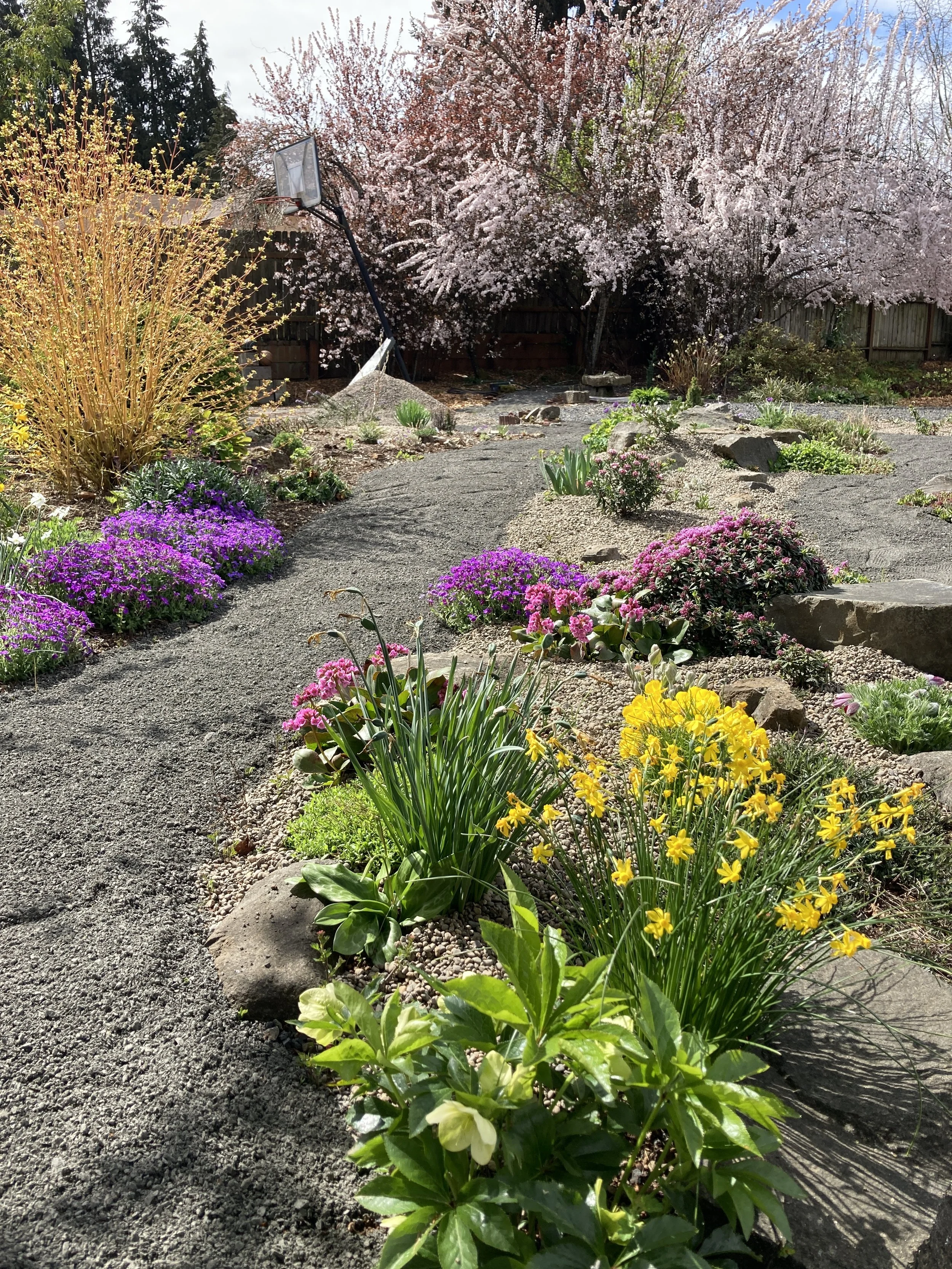

Phlomoides tuberosa
A statuesque perennial of the mint family, Phlomoides tuberosa ranges across the steppes and open woodlands of eastern Europe through central Asia, where it grows in dry meadows, rocky slopes, and light scrub. Its deep-set tuberous roots anchor it firmly into poor, stony soils, allowing it to withstand drought and grazing pressure in its native grasslands. My great grandparents and grandparents walked across the Central Asian steppes and over the mountains from Ukraine to China where my dad was borne on the edges of the Gobi desert to escape from Stalins purges around the beginning of the second world war. I can picture my grandmother picking these in monochrome sort of tone before heading up some windswept mountain pass.
In cultivation, this species makes a bold architectural statement. From a base of large, rough-textured leaves rise sturdy stems 3–5 feet tall, tiered with whorls of rosy-purple flowers. Blooming from late spring into summer, the stacked rings of blossoms are magnets for bees, butterflies, and other pollinators, while the strong vertical lines remain ornamental long after flowering as seedheads persist into autumn and winter.
Despite its imposing stature, Phlomoides tuberosa is tough and reliable. It thrives in full sun and well-drained soil, tolerates drought once established, and is hardy to USDA zone 4. Best placed in sunny borders, dry meadows, or naturalistic plantings, it also provides a dramatic vertical accent as the back of a large rock gardens or dry gravel beds. Its drought tolerance and long-lived habit make it a resilient companion for other steppe and prairie perennials.
Still little known outside specialist collections, Phlomoides tuberosa deserves wider planting for its combination of rugged adaptability, strong form, and ecological value to pollinators.
A statuesque perennial of the mint family, Phlomoides tuberosa ranges across the steppes and open woodlands of eastern Europe through central Asia, where it grows in dry meadows, rocky slopes, and light scrub. Its deep-set tuberous roots anchor it firmly into poor, stony soils, allowing it to withstand drought and grazing pressure in its native grasslands. My great grandparents and grandparents walked across the Central Asian steppes and over the mountains from Ukraine to China where my dad was borne on the edges of the Gobi desert to escape from Stalins purges around the beginning of the second world war. I can picture my grandmother picking these in monochrome sort of tone before heading up some windswept mountain pass.
In cultivation, this species makes a bold architectural statement. From a base of large, rough-textured leaves rise sturdy stems 3–5 feet tall, tiered with whorls of rosy-purple flowers. Blooming from late spring into summer, the stacked rings of blossoms are magnets for bees, butterflies, and other pollinators, while the strong vertical lines remain ornamental long after flowering as seedheads persist into autumn and winter.
Despite its imposing stature, Phlomoides tuberosa is tough and reliable. It thrives in full sun and well-drained soil, tolerates drought once established, and is hardy to USDA zone 4. Best placed in sunny borders, dry meadows, or naturalistic plantings, it also provides a dramatic vertical accent as the back of a large rock gardens or dry gravel beds. Its drought tolerance and long-lived habit make it a resilient companion for other steppe and prairie perennials.
Still little known outside specialist collections, Phlomoides tuberosa deserves wider planting for its combination of rugged adaptability, strong form, and ecological value to pollinators.






